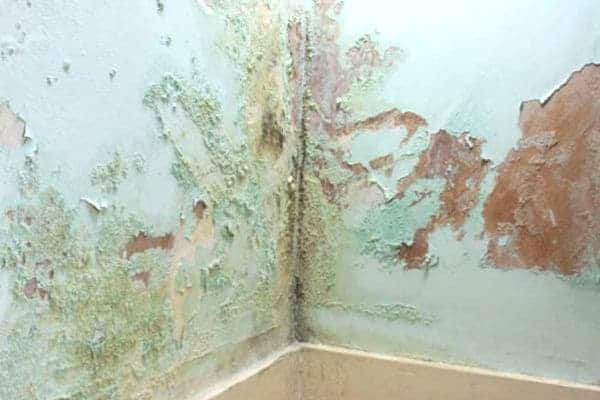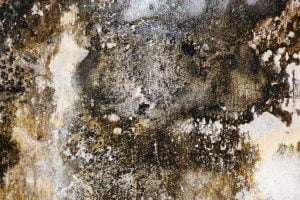
Rising Damp Treatment
Rising Damp Treatment Advice
Every building is prone to damp, but it’s the older buildings, places that have stood for a long time, perhaps centuries, which are more prone to this problem. This problem is mitigated by modern building practices where properties are built with damp proof courses, in most cases impermeable plastic membranes to stop water passing through. But some buildings don’t have this precaution.
The main causes of rising damp is simply down to groundwater. It’s basically moisture when the groundwater rises underneath or next to the walls of your home, and it doesn’t matter if the walls are made of brick, stone or block.
The moisture rises through the small holes present in the mortar or brick. Eventually, gravity will stop the rise of the water, by counteracting the upwards force of the capillary action. On the whole rising damp will occur when the water has reached a height of 1.2, but its effects – salt deposits, for instance, may be present at a much higher level because of the non-breathing wall coverings such as vinyl wallpaper or non-breathing paints.
So, do you have rising damp? The signs are easy enough to work out.
- Do you have a musty odour or damp smells?
- Does your wall now have a low temperature very low in height?
- Are your floor timbers beginning to show signs of rot?
- Is the plaster in your walls beginning to crumble or blister? If so, it’s because of salt crystallisation.
Other signs of rising damp are “tide-lines” of yellow or brownish staining or blown plaster. These are usually found in the lower sections of your walls, and if your walls are blistering or showing a crumbling appearance you might actually see deposits of white fluff – this is the salt previously mentioned, and it is left behind when the damp begins to evaporate off the walls, but it is still a problem. Black spots of the mould may also appear on the damp areas. The salts left behind also make it impossible to just replaster.

It is not advisable for people – homeowners and business managers to deal with the problem themselves without at least tackling the cause itself otherwise it would simply begin again. A simple quick fix job for the rising damp, repointing and painting over the affected areas won’t solve the problem. It will just make it more expensive to tackle later and you will need to redo the job later anyway at a later date.
The best way to tackle the rising damp would be to identify the cause in the first place and deal with it before it could happen again, causing more damage to the property, and then carrying out the repairs properly.
Rising Damp Treatment
Originally rising damp was treated by using damp proof course liquids injected under high pressure to block the pores in the bricks, blocks and stone where the water had risen. Complex and expensive systems of pumps were required for this, but it is possible to repair the damage without resorting to this method.
One way for rising damp treatment to work is to simply remove the contaminated plaster and a new damp proof course will be injected into the masonry mortar. This cream-like substance will then disperse through the mortar line, and it will begin to fuse and create a new damp proof course to stop rising damp from passing through the walls again. The next step is simple – the walls will need to be replastered and repainted with a chemical salt retardant agent and with a damp proof render which will prevent any remaining salts from contaminating the new plaster.
We also drill holes down to an appropriate depth in the brick/mortar. A water-based silicone damp proof liquid which is low in odours is then injected down into these holes to reduce the movement of water in the capillaries in the masonry.
Damp proofing rods are designed to be a high strength, liquid free alternative to other methods of rising damp treatment, and are designed to be placed on the walls without an injecting pump so there is no need to use heavy and expensive tools and equipment. And the time it takes to fit them in is reduced because large amounts of liquids as used by the older methods are not used in these cases then the time it takes a wall to dry is reduced.
How to Know if You Need Treatment for Rising Damp
Damp issues in your property occur when water penetrates the walls, leading to wet patches on the interior or exterior walls that can eventually lead to several issues such as wet rot in the timber or mould in your home. Rising damp is a serious damp problem within a home since it’s often a sign that there is something wrong with your damp proof course. The damp proof course or DPC refers to a waterproof membrane that spans the width and length of your property’s internal walls, with the main purpose of keeping water outside of your home and preventing damp.
Rising damp is a type of damp that happens when the water rises up through the walls from the ground beneath, often because the DPC is not working as effectively as it should, which can happen for several reasons. Older properties may be more susceptible to rising damp problems as there may not be any DPC present or the DPC might have deteriorated and become less effective over time. Rising damp is a result of capillary action, where moisture is sucked upwards through tiny openings such as holes in the bricks or stones used to construct the walls.
Because rising damp is a specific type of damp problem, the good news is that it can often be easily noticed when it is affecting your home. One of the main signs of rising damp is yellow or brown patches on the walls. These will occur on the ground floor, and you will usually notice them appearing just above the skirting boards. The damp might also affect the woodwork and your skirting boards might become discoloured or in severe cases, have structural issue due to the damp causing it to rot. Because gravity will eventually pull the moisture back down, rising damp will only usually occur up to a certain height on the ground floor, which can make it one of the easiest types of damp to spot. You may notice salt deposits from the affected bricks appearing higher up on the walls if you have vinyl wallpaper or have used certain types of paint such as wipeable paint on your wall.
How to Treat Rising Damp in Walls
To treat rising damp, you should contact a professional who can inspect your property and your damp proof course to get to the root of the issue. In almost all cases of rising damp, this is caused by a problem with the damp proof course which will need to be rectified to ensure that the problem does not reoccur. While you may be able to hide the signs of rising damp in your home by painting over it or even applying a damp-proofing undercoat, this will only likely mean that the rising damp re-occurs in the future as there is still moisture getting in through the damp proof course and travelling up to the walls causing the damage.
What is the Best Rising Damp Treatment?
To determine the best treatment for rising damp in your home, it’s first essential to figure out what has gone wrong with the damp proof course. If you have noticed rising damp in an old property, it may simply be that there is no damp proof course present, and there is no barrier in place to prevent the moisture from reaching the internal walls of your home. In this case, you will need to have a professional install a new damp proof course. If your home is old but there is a damp proof course present, then it may be that over the years, the DPC has deteriorated and become worn, making it less effective at doing its job of keeping the moisture out, leading to moisture managing to get through it and penetrate your property’s internal walls.
However, bridging of the DPC is one of the most common reasons behind rising damp issues in properties. This occurs when there is an object or structure close to the property that has allowed moisture to get into the internal walls above the location of the DPC. The good news if your rising damp is caused by this problem is that you probably do not need to have your DPC replaced with a new one, as it’s probably functioning correctly on its own. However, you will need to deal with whatever has been installed at a higher level and is providing a ‘bridge’ for moisture to get over the damp proof course and into your internal walls. This can be caused by structures such as sheds and extensions next to the property, items placed close to the external walls, or debris causing a blockage in the cavity wall.
What is the Best Way to Treat Rising Damp Due to No Damp Proof Course?
If there is no DPC installed at a property, then rising damp is much more likely to occur. This is because there is no waterproof membrane keeping the moisture from penetrating the brick and rising upwards. Older homes that were built before the introduction of damp proof courses might be more susceptible to this problem unless there has been a damp proof course installed since. The good news is that it is possible to install a new damp proof course in an older existing home. While it might not be as easy as installing the DPC while in the process of building a new property, a trained professional can make sure that your property is fitted with a functional and effective DPC to prevent future rising damp issues. This is done by injecting waterproofing chemical substances into the bricks.
Rising Damp in Walls Treatment When Damp Proof Course is Bridged
If the DPC has been bridged and this is causing the rising damp to appear in your home, the good news for you is that this is often one of the easiest rising damp issues to treat. In many cases, there will not need to be any work carried out on your DPC as it may be working effectively, save for the ‘bridge’ that has been created, allowing moisture to get over it. In this case, the best thing to do is to identify and remove whatever is creating the bridge for the moisture to travel over the damp proof course.
There are several things that can cause this including blockages of debris in the cavity wall, or if your neighbour has had a new damp proof course installed at a higher level compared to yours. Structures and objects outside the home against the external walls that are at a higher height than the DPC can also cause bridging. In this case, all you may need to do is remove the culprit and the rising damp will not reappear. On the other hand, if your rising damp is due to neighbours having their DPC installed higher and creating a bridge for moisture to enter your internal walls, this might require more work. Most of the time, in this situation, you will need to reinstall a new DPC at your property to match the height of your neighbour’s.
Rising Dampness Treatment for Your Interior Walls
Rising damp can cause a lot of damage to the interior of your property. One of the first signs of rising damp is stains on the walls that can be unsightly to look at. Along with this, the additional moisture in the walls can cause more serious problems to develop over time including mould or wet rot of your woodwork. Depending on how long the rising damp in your home has gone unchecked, there might be a lot of work to do inside to deal with it.
Before carrying out any work on the rising damp on your interior walls, it’s important to make sure that the root of the problem has been successfully dealt with. Otherwise, the rising damp is only going to reappear over time which can be hugely frustrating if you’ve spent a lot of time and money redecorating, only to have to do it all over again. Once you are certain that the rising damp issue has been repaired and treated successfully, assess the damage indoors to consider what you will need to do to get it back to a decent state.
In some cases, all you might need to do is apply a damp-proofing treatment or undercoat before re-painting or re-wallpapering the affected wall or walls. On the other hand, rising damp that has caused a lot of damage might be a bigger job to fix. You may need to have new skirting boards installed, for example, if the rising damp has caused significant damage to the woodwork. For small patches of rot in the woodwork, you may want to consider using a wood hardening product instead. Depending on the damage that has been done to your walls, you may want to consider having them replastered before decorating.
Rising damp can be a serious issue where moisture is travelling up your internal walls from the ground. Knowing what causes this issue and how to get it treated is important for all homeowners.
Tags
What happens next?
Call London Damp Specialists on 020 7458 4864.
Alternatively, you can book a survey online by completing your details below.
Once you have submitted the form, one of our surveyors will be in touch with you to discuss your problems within 24 hours.
Your free, no obligation damp survey will typically only take between 15 to 30 minutes.
30 year guarantee We also offer a 10 year insurance backed guarantee.
Free damp survey No obligation survey with detailed reports and quotations
Experienced & qualified Team qualified to industry standards (CSRT & CSSW)
Fully insured Public liability limit of indemnity £5million







